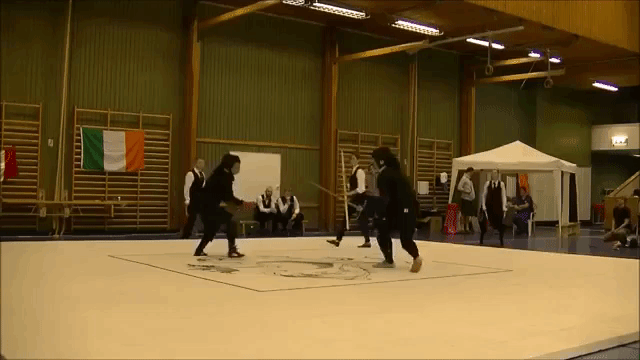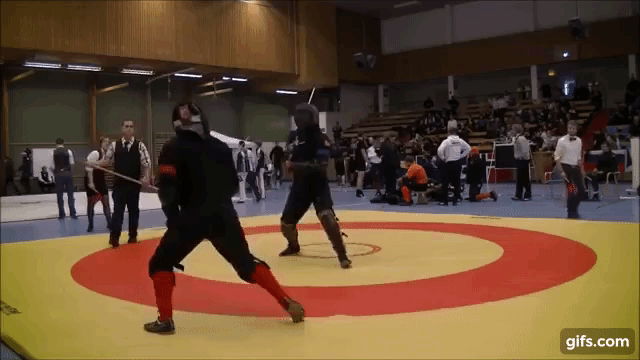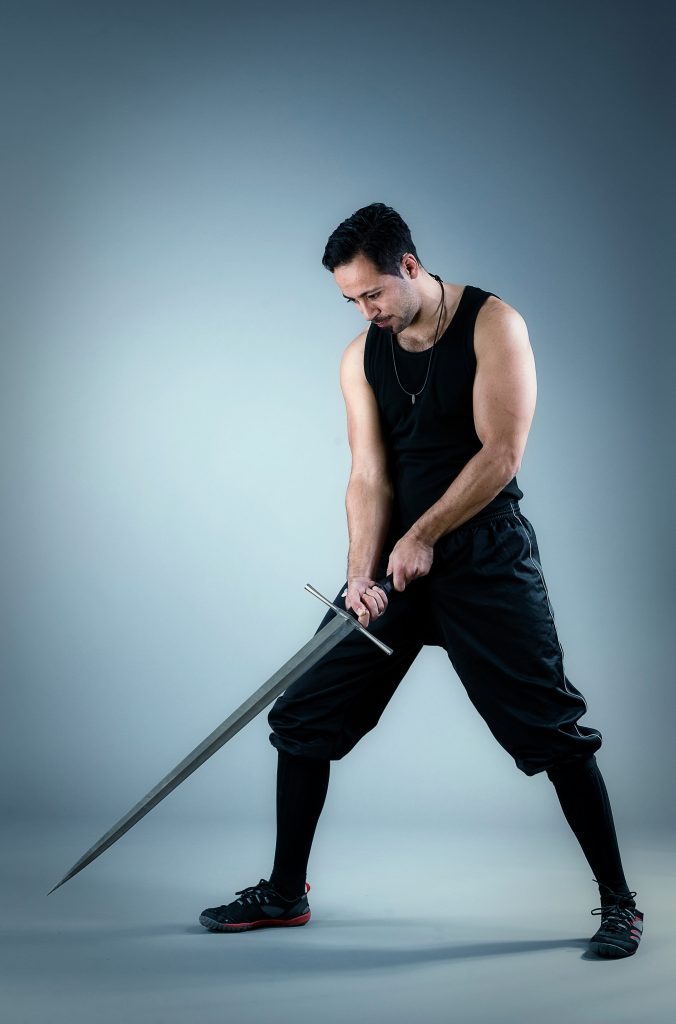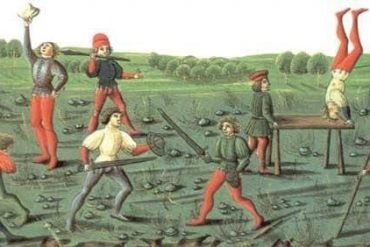The perfect thrust is a thing of beauty. It is decisive, powerful, and it stops all counters and after blows from the opponent—in real life it ends the fight, and in competitions it makes the crowds cheer. So how do you perform the perfect thrust? Here are three simple things to practice.
-
Pick the right target
As beautiful as the perfect thrust is, as embarrassing it is to get a double thrust or getting hit while thrusting. It’s not hard to imagine that there have been quite a few instances in history where both fencers have fallen to the ground pierced by each other’s blades. In a less sensitive time, it’s also easy to imagine that these fencers may have received some post mortem ridicule.
Picking the right target means that you thrust at an opening where you can close the incoming line of attack from the opponent to avoid a double hit.

One way of training this is to move in behind your sword as you are closing a line and seek opposition of the blades. Another is to practise timing your thrust just as the opponent has moved into a position or guard.
2. Use the cross guard to protect your hands
Angling the blade makes it easier to make sure that your hands stay safe throughout the entire movement. If you start from a pflug position on your right-hand side and thrust to an extended ochs position, you should angle your blade to 45 degrees, to best protect your hands. If you are thrusting down the centre line, binding the opponent’s sword, you can simply turn the edge against his blade, to create a better angle of the thrust and protect the hands.

3. Extend the arms before stepping
The thrust starts with the extension of the arms, creating a threat behind which your body moves. Executed well the motion is smooth and fluid, but it is important that they do actually move first. The extended blade presents a threat that the opponent will have to deal with and it lets you close an incoming line as well, to prevent a counter thrust.
After the extension of the arms you step. Thrusting can be done both with a simple step or passing step and this depends on how far your thrust must travel as well as how you bind the opponent.
If you connect with the opponent’s blade, try to remain in the bind to prevent the after blow. Disengaging to parry incoming blades, or pushing forward to close the distance and wrestle, should be done depending on what is the safest course of action.





